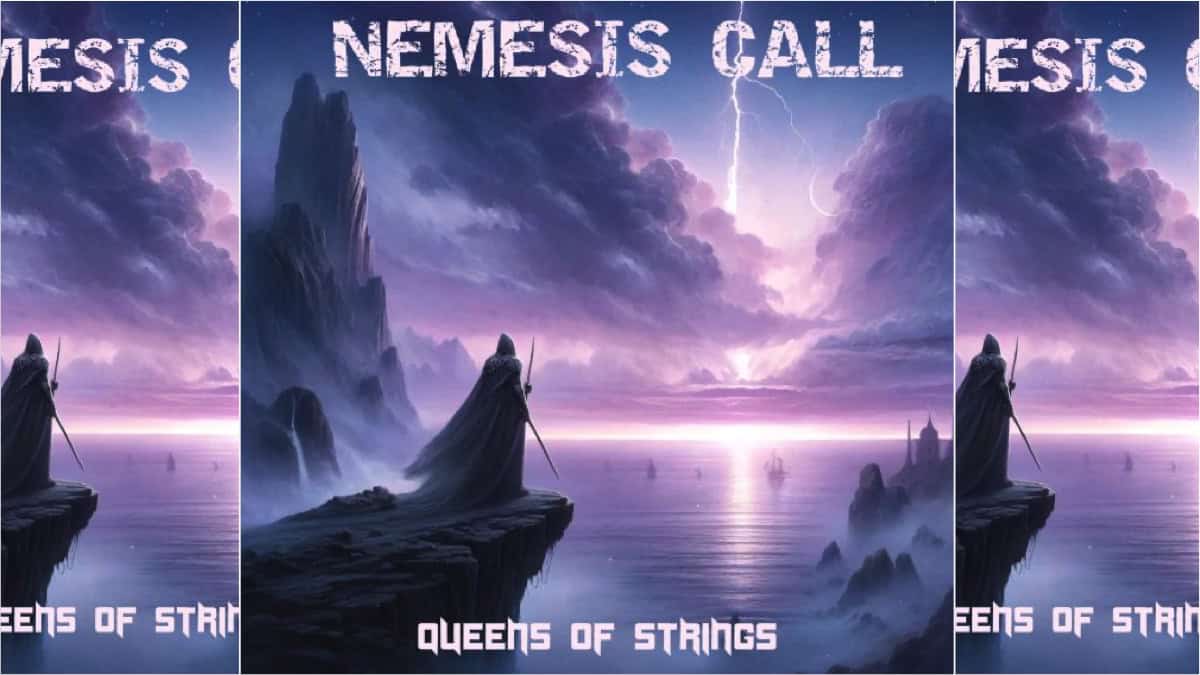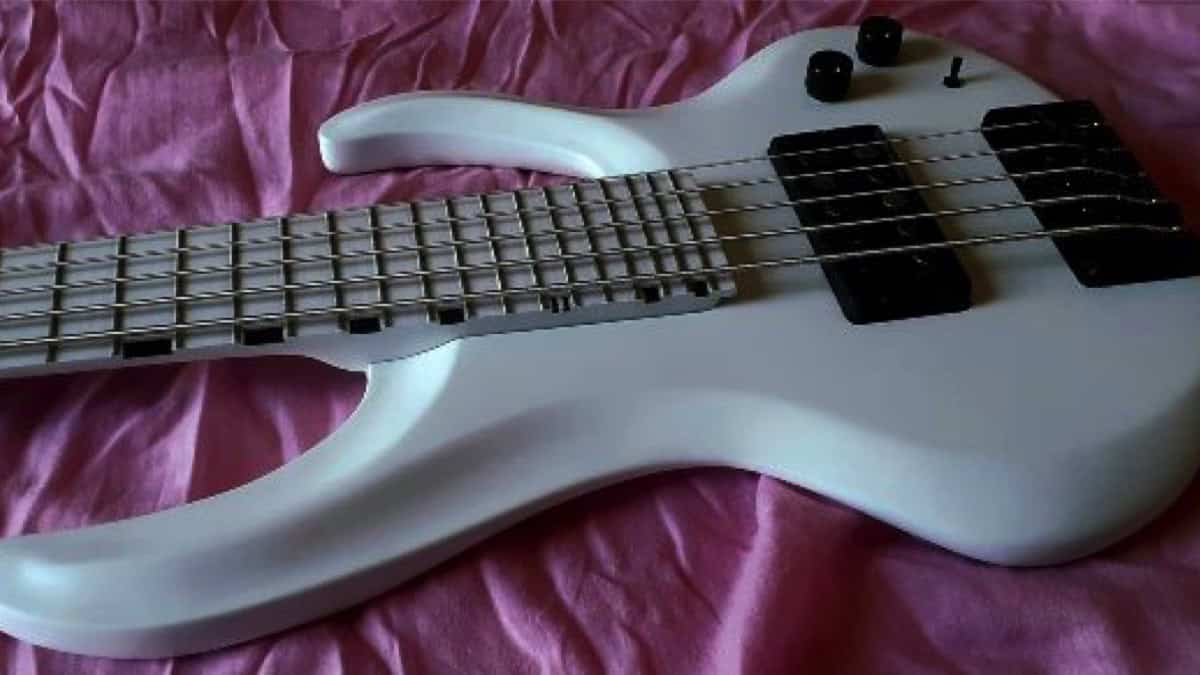Latest
Worship Bassist’s Toolkit with Steve Gregory – Fretboard Knowledge
 My father is, among many things, an amazing craftsman. His specialty and passion is woodworking, which requires not only a great deal of skill, but also that the right tools for the job be on hand. The progress of each project on which he works is dependent upon his tools being available, maintained, and ready for use. From the broadest cuts to the finest details, there are specific tools to be employed. Further, these tools are not interchangeable – a hammer will not help when a saw is needed, for example. In order to create his artwork, my father has to have the appropriate tools.
My father is, among many things, an amazing craftsman. His specialty and passion is woodworking, which requires not only a great deal of skill, but also that the right tools for the job be on hand. The progress of each project on which he works is dependent upon his tools being available, maintained, and ready for use. From the broadest cuts to the finest details, there are specific tools to be employed. Further, these tools are not interchangeable – a hammer will not help when a saw is needed, for example. In order to create his artwork, my father has to have the appropriate tools.
In much the same way, the worship musician’s ability to create art and worship is dependent upon our toolset being available, maintained, and ready for use. While the base gig bag tools are necessary (tuner, cable, etc.), I want to explore another toolkit we need. These tools include the theoretical, harmonic, and knowledge-based skills that allow us to create artful worship. To begin, this month we will explore fretboard knowledge.
To reuse the analogy above, let’s imagine a beautiful new saw. This saw has the latest adjustable blade, the best precision guides, and is made of the finest materials. This machine has all of the necessary options to create beautiful and intricate cuts; however, would you expect that someone would be able use the tool to create art if they “mostly knew” how to use it? What if they only knew how to use some parts of the saw? What if they were really familiar with one area of the tool, but lacking in knowledge of other areas?
I think it is easy to see that the person in this example is going to have many, many challenges in their quest to produce art. Unfortunately, many bassists are prevented from creating artful worship because of their lack of fretboard knowledge. The bass may have all of the bells and whistles known to man, but if you are unable to use the instrument, what’s the use?
This issue rears its ugly head in many different ways. Some bassists are extremely familiar with frets 1-5, but frets 6-11 are a land of mystery (safety is found again at the octave repeat at fret 12). Other bassists climb strings horizontally, leading to awkward shifts and hand positions. Still others “mostly know” their fretboard, but struggle and strain when pushed to play in an uncomfortable area of the neck. In each situation, the player is prevented from being truly free to worship, because of the attention and stress that has to be exerted. This inability to attend to worship is detraction at best and distraction at worst.
To remedy this issue (and to release us to freely worship and create our art), it is important to attack the problem in our practice sessions. To begin, let’s take a single note (without regard for octaves) and find every instance of that note on the neck. The following maps out the all of the “A’s” on a four string bass, assuming a 20-fret neck:
E String: Frets 5, 17
A String: Open, Fret 12
D String: Frets 7, 19
G String: Frets 2, 14
If you are using an instrument with more frets or strings, make sure you find all of the notes in your extended range. Do the same discovery exercise for every note and make sure you say the note name as you play it. Rather than work chromatically through the neck, use a pattern that shifts around the neck. I suggest moving through 5ths – C, G, D, A, E, B, F#/Gb, C#/Db, G#/Ab, D#/Eb, A#/Bb, F. After running this cycle, you have covered all of the notes on the bass!
Now that we’ve found the notes, it is time to shake up our brains a little to push our limits. To do this, invent some “games” you can play with yourself so that you are forced to look at the neck in different ways. For example, you could:
- Start with the highest note on the G string and descend, instead of starting on the lowest available note on the E string and ascending.
- Play the lowest note available on the E string, then it’s octave found 2 strings away. Move to the next available note on the E string, play the octave 2 strings away. Repeat for A string.
- Reverse the octave pattern, starting on the highest note available on the G string.
- Play as many of the notes available within frets 1-5, then 6-11, 12-17, etc.
The possibilities are truly up to you. Challenge yourself! Force yourself to really explore the neck and be determined to master it! If you find yourself getting into a pattern rut, make flash cards with a different note on each card. Shuffle the deck and work through the notes that way.
When you are ready for additional challenge, you can add time to the equation. Using a metronome, set a click and find the next note in your pattern on each click. Have fun, challenge yourself, and realize that you are working to release yourself to play incredible worship!
Taking the concept to the next level, we can expand to play a multi-note pattern in as many ways as possible. For example, let’s look at the ascending arpeggio pattern G-B-D. Here are the ways you can play this pattern (again, disregarding octaves, but maintaining the ascending pattern):
Again, there are endless ways to challenge yourself just as you did above. Stretch your abilities, learn the fretboard!
Having fretboard knowledge available, maintained, and ready for use is crucial for the worship bassist. This knowledge frees to you to worship completely and to create your art. Challenge yourself, have fun, and make sure you let me know how you are doing!
Until next time, I hope that your bass playing is blessed and that you can bless others through your bass playing!
Gear News
New Gear: Spector Doug Wimbish USA Custom Series Basses

Spector offers Doug Wimbish USA Custom Series basses…
Spector, a leading authority in bass guitar design, unveils two new Doug Wimbish USA Custom Series basses. Synonymous with bass excellence since 1987, Wimbish collaborated with Spector’s USA Custom Shop to create the DW-4 and DW-5 models, echoing the iconic instruments that have been favored heavily throughout his recording and performing career.
These signature basses faithfully replicate Wimbish’s originals, down to the smallest details like neck contours and nut widths. Customized EMG pickups, developed in collaboration with Wimbish, capture the distinctive sound that has shaped his monumental musical impact. These models invite players to explore the feel and response that have defined Wimbish’s signature style over the years.
Available in 4-string and 5-string versions, each model boasts unique features & finish options. The DW-4 comes in Amber Stain Gloss and Black Stain Gloss options, while the DW-5 offers Dark Blue Stain Gloss and Faded Natural Gloss. Every purchase includes a certificate of authenticity signed by Doug Wimbish. Wimbish comments, “Spector took the time to get every little nuance right, and that to me is dedication and being thoughtful enough to know ‘I want to nail it,’ and they did. I’m able to pick these instruments up for the first time and play them like I’ve already had them for years.”
For more information, visit spectorbass.com/doug-wimbish-usa-signature-series/.
Photo: Doug Wimbish, pictured with the new Spector Doug Wimbish USA Custom Series basses
Bass CDs
New Campaign: Alberto Rigoni, Nemesis Call – Queens Of Strings

Italian bass master and composer ALBERTO RIGONI is thrilled to announce his brand new project “Nemesis Call – Queens Of Strings”.
Nemesis Call – Queens Of Strings features a super talented drummer from Japan (TBA) and tons of female guitarists such as SAKI, Giusy Busetto, Alexandra Zerner (TBC) and many many others (TBA). Furthermore, Alberto has also launched a Fundraising Campaign for the project. 20% of the income will be donated to Lega del Filo d’Oro legadelfilodoro.it/it, an Italian association that helps deaf and blind children!
Alberto shares:
“Hello friends and music lovers! I’m Alberto Rigoni, an Italian composer and.. a BASS GUY! Between 2008 and 2024 I released 13 solo albums, spanning from progressive, rock, ambient to funky and experimental music, which also features contributions from musicians such as keyboard wizard Jordan Rudess (Dream Theater) drummer Gavin Harrison (Porcupine Tree) and Marco Minnemann (the Aristocrats), keyboardist Kevin Moore (ex Dream Theater), singer John Jeff Soto (ex Goran Edman (ex Y. Malmsteen), bassists Nathan East, Stu Hamm (Joe Satriani), Nik West (ex Prince) and many others. I’m also bass player for BAD As, Sunset Groove Society, Kim Bingham, The Italians bands and co-producer of Mistheria’s Vivaldi Metal Project.”
Alberto on the new project Nemesis Call:
“Even if my latest album “Unexpected Lullabies”, dedicated to my newborn Vittoria Parini Rigoni, will be released on June 4th, 2024, when Vittoria came to life I felt the need to compose new music (yes, I really can’t stop!!!!!). This time will be quite challenging because I’m willing to release an instrumental ambient/prog/rock/metal album, that will feature a talented and young drummer (TBA) and tons of female guitarists (that’s why I will call the album “Queens of the Strings”) such as Alexandra Zerner, YOKA and many others (TBA/TBC)). It won’t be easy to manage all such great musicians but I will make it!! Are you ready to face a new prog experience? The album will be released in Digipack CD and in high-quality digital format approximately at the beginning of 2025.”
The Fundraising Campaign:
As an independent artist, Alberto is looking for supporters who can help him reach the budget for the production (recordings, mix, mastering, artwork etc.) of this new album and has started this fundraising campaign that will end successfully on October 15th, 2024.
Get further information about Alberto Rigoni’s new project Nemesis Call Fundraising campaign at albertorigoni.net/nemesiscal
Bass Videos
Artist Update With Bassist Derek Frank

Bassist Derek Frank…
Many of you will remember the last time I chatted with Derek Frank was back in 2017. The main thing that impressed me was how busy Derek was and how he juggled playing with many huge acts.
Now, I am happy to hear that Derek launched a new album last March titled “Origin Story” where he digs deep into his roots and pays homage to Pittsburg.
Join me as we get caught up after all these years and hear the details about the new album, how Derek gets his sound, and his plans for the future.
Photo, Stephen Bradley
Featured Videos:
Visit Online:
www.derekfrank.com
www.instagram.com/derekfrankbass
www.youtube.com/derekfrankbass
www.facebook.com/derekfrankbass
Latest
This Week’s Top 10 Basses on Instagram

Check out our top 10 favorite basses on Instagram this week…
Click to follow Bass Musician on Instagram @bassmusicianmag
FEATURED @foderaguitars @bqwbassguitar @lecomptebass @xvector_basses @vuorensaku_guitars @phdbassguitars @meridian_guitars @sterlingbymusicman @ramabass.ok @overwaterbasses
Gear News
New Gear: Alberto Rigoni Signature Bass, the VPR5 by Gaetano Costanzo!

Alberto Rigoni Signature Bass, the VPR5 by Gaetano Costanzo!
Internationally renowned bassist ALBERTO RIGONI (soloist, BAD AS, Vivaldi Metal Project, TwinSpirits, etc.) is proud to announce the release of his signature bass VPR5 made by renowned Italian luthier Gaetano Costanzo!
The bass is entirely handmade in Italy, without the use of CNC or other machinery, and has rather special features. The VPR is a 5-string bass (but also available as a 4-string) with 30 frets, Seymour Duncan pickups, Music Man Alnico style, passive electronics (volume, tone and a switch to select series/parallel/single-coil mode), alder body, and American maple neck and fingerboard. Gotoh tuners that ensure perfect intonation. The bass is totally painted white (nitro finish) but other colors can be requested. The VPR has a weight of about 2.9 kg and suitable for any genre.
For more information contact Gaetanobass77@gmail.com or visit online at www.instagram.com/gaetanocostanzoluthier or www.facebook.com/GaetanoCostanzoLuthier



















